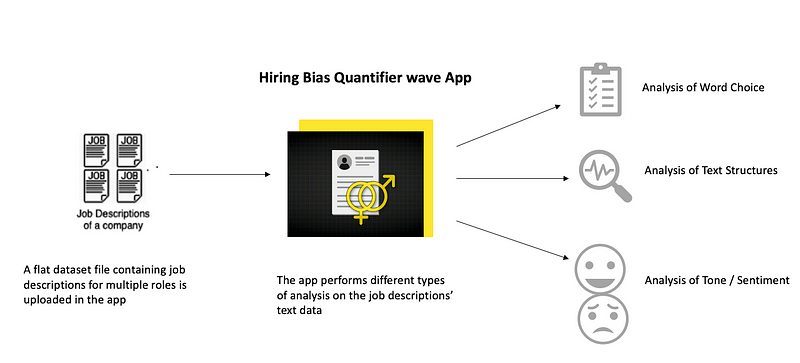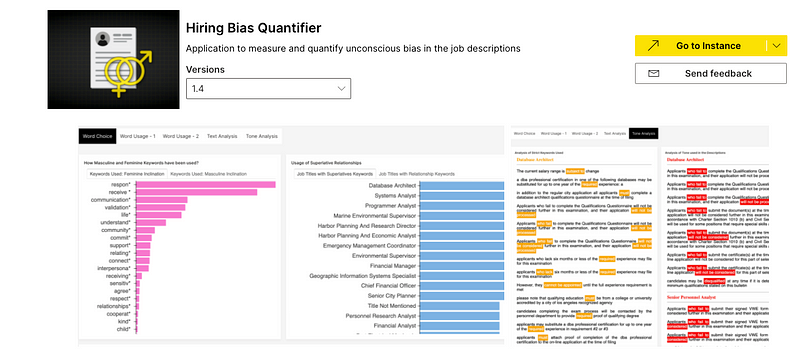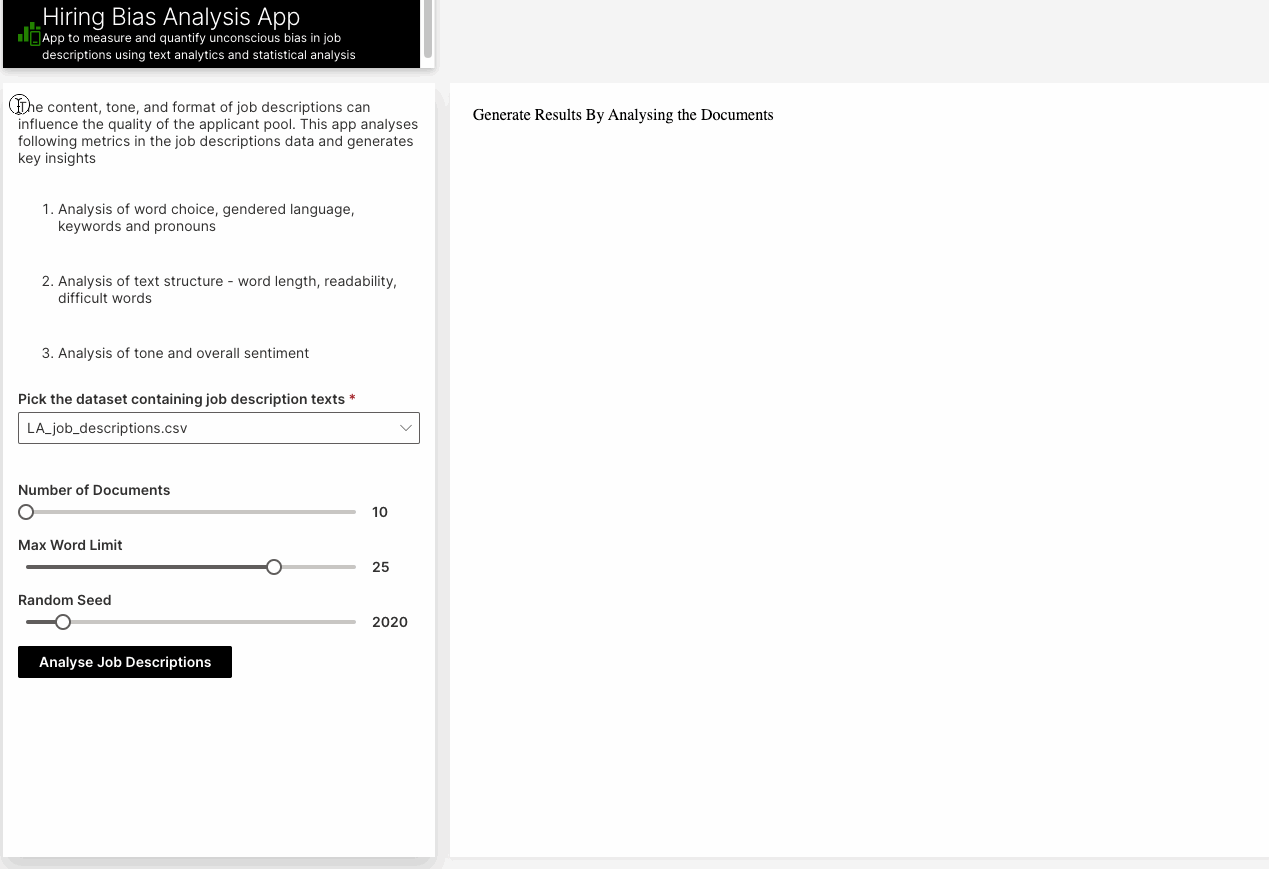Can AI Solve the Recruitment Problems for Hiring Managers?
In this article, we will discuss how hiring managers can rely on the AI-based HR Tech tools to identify, analyze and solve excruciating recruitment problems.
Recruitment is a very important process in organization development. It involves a scientific approach to design job analysis, candidate sourcing, interviewing and finally, hiring a candidate. In most cases, it takes weeks to fill up a position. In high-level job roles, it could even take months. But, hiring managers have bigger recruitment problems to tackle in their jobs than just doing everything quickly. Today, hiring managers have to focus on many different things during the recruitment process than just screening and interviewing a candidate. Due to the rapid shift in the workplace culture and the need to diversify human resources management with newer tactics and strategies, hiring managers are facing recruitment problems that could be tackled using Artificial Intelligence and Data Analytics available as part of the Human Resources Technology stacks, or HR Tech stack. In this article, we will discuss how hiring managers can rely on the AI-based HR Tech tools to identify, analyze and solve excruciating recruitment problems.
What are the top hiring problems that recruiters face with their processes and deliverables and how AI is used to solve them? Let’s find out.
Problem 1: Poorly-conceived job analysis
Job analysis helps hiring managers identify the right kind of skills in candidates that are required to accomplish a task or activity at a workplace. Job analysis could be used as a readymade template to not only hire the right candidate but also help reporting managers and trainers to come up with a solid career development plan as part of TLD and performance appraisals.
But, the problem with job analysis is that it is time-consuming and often overlooks the need to rely on data. For instance, many job analyses blatantly overlook the aspects of robotic process automation, email management and social and psychological status of the candidates before, during and after the recruitment process.
Recommended: HR Tech Interview with Satish Gannu, Chief Technology Officer at Korn Ferry Digital
For instance, a HR Tech company called Wonderlic AI solves recruitment problems in job analysis. With Artificial intelligence, companies can fast-track their job analysis. These capabilities could help to improve the overall process, delivering precision and effective outcomes with verifiable reports. Now, with AI at core, many HR Technology companies offer automated templates to design relevant job analysis for traditional roles as well as modern ones across diverse group of industries. Using AI models, hiring managers can actually design, schedule and advertise jobs on relevant platforms, including on social media and online job boards.
Problem 2: Mismanagement of an unexpected volume of applications
We reviewed many research papers and discussion forums where the audience asked the question related to the volume of applications hiring managers traditionally receive and the number of candidates interviewed from these pool of applications.
It is understood that recruitment is getting challenging and the demands from hiring managers are shoring each day. But, in order to hire the right candidate, it is important to have a very large pool of applications. Having a steady stream of CVs from interested candidates is one thing—and screening only the ones with the right set of skills based on job analysis is another thing.
According to Glassdoor, an average job advertisement garners 250 applicants with relevant CVs. Of these 5 might get an interview call, with 1 getting selected for the job eventually. Now, with 250+ CVs trickling into your job board for 1 role can cause massive bottleneck for hiring managers. Screening through each CV could take 6-8 seconds (on an average). But, screening doesn’t stop there. Recruiters use other online channels such as LinkedIn (87% of the recruiters do this) to look up for candidates and ascertain if the CV really makes sense to set up a screening round or call for an interview. Using AI parsing tools, HR teams can find the best candidate from a pool of applicants in an automated manner. Top AI parsers provide a seamless integration with the existing HR and talent management systems that may be in use at the organization, in addition to providing advanced AI features for semantic search for skills, courses, certifications and CTCs. In addition, some parsing tools can also deliver an intuitive summary about the candidate using smart AI-based NLP and data extraction. Overall, 90% of the recruitment problems linked with application screening can be solved by hiring an AI-based CV parser do the job for you.
Top HR Technology Insights:
Career Mobility Investments: Why Employers should Embrace an Optimistic Approach
Problem 3: Finding it difficult to diversify candidate search
Most organizations now understand the need to diversify their workforce with innovative strategies. DEI programs are one such way to manage these demands from the business leaders. However, many HR teams find it very hard to fulfil these demands due to many reasons. Why is diversifying candidate search to meet DE&I requirements so difficult despite having access to best of candidate search algorithms?
The biggest reason for lack of diversity in candidate search is related to self-disclosures from candidates. Most candidates look out for a job don’t prefer to disclose their disabilities or racial background. Even for full-time employees, less than 10 percent of the organizations take enough steps to diversify their workforce to meet DE&I benchmarks. An AI-powered tool can definitely come to rescue here. For instance, iCIMS’ Applicant Tracking System can drive DEI by remediating any and all kinds of biases through precision candidate matching, talent rankings and ATS metrics important to empower your hiring managers take decisions about DE&I practices. Not only do AI-based ATS remove recruitment problems linked with overall DE&I practices but also ensure there is a dynamic understanding among the business leaders about how using AI and NLP could benefit everyone in the industry with superior bias-free talent assessments.
Check this bias quantifier from H2o.ai:


 Another HR technology solution for influencing your AI-based DE&I practices could be Talenya’s Diversity AI. This tool completely eliminates bias and increases workforce diversity by providing equitable recruiting platform as part of automated sourcing pipelines.
Another HR technology solution for influencing your AI-based DE&I practices could be Talenya’s Diversity AI. This tool completely eliminates bias and increases workforce diversity by providing equitable recruiting platform as part of automated sourcing pipelines.
Problem 4: Answering the mundane using AI-based intelligent assistants
Recruitment chatbots are considered to be the pinnacle of AI-based HR Tech intelligence capabilities for workforce management. To build a chatbot using Machine Learning algorithms based on semi-supervised data or synthetic data is truly a marvelous achievement. We will explain it here why recruitment chatbots are gaining so much popularity in the post COVID world.
Candidates or potential applicants have numerous questions before they apply for a screening round. Most job advertisements don’t have a scope for one-on-one chat. The lack of trustworthy conversation hampers the flow of recruitment process. For instance, post COVID-19, most candidates would ask about jobs and their workplace conditions. These could include choosing between WFH, a hybrid or fully office engagement. Or, what kind of salaries are candidates eligible in the role they apply for, with the experience they have, etc?
AI chat bots for recruitment are already part of the hiring ecosystem for some time now, yet their true potential remains untapped. Modern HR Tech solutions with chat bot support are trained to answer questions with varying degrees of complexities. It is understood that for jobs that are offering WFH and hybrid models of engagement, the number of applicants suddenly go up. So, AI chatbots can show jobs that have WFH versus hybrid openings. Similarly, AI-based salary trends could be shown to candidates for the roles they are applying to and how these roles and corresponding salaries have changed over the course of months.
During a conversation with the recruitment chatbot, candidate can choose to extend the conversation to other channels, which could be digital or personal. These could involve email, SMS, telephonic or video screening rounds. Moreover, by deploying an AI based intelligent assistant during the initial stages of hiring process helps recruiters garner all the meaningful personal and semantic data required to assess the candidate’s profile without bias. When you have an AI chatbot for hiring process sitting on top of your HR Tech stack, 90% of the recruitment problems disappear.
AI and ML in HR: Introducing Moveworks for HR: The First AI Solution That Provides Personalized HR Support
Problem 5: Poor company reputation
Workplace culture, company reputation, alumni testimonials and corporate legacy are some of the biggest factors that attract or repel candidates from joining an organization. In 2017, it was a 50-50 among candidates who were asked if they would accept an offer with a hike in salary from an organization with a bad reputation. Post-COVID, branding and employee testimonials definitely play a much greater role in influencing and bringing candidates for the screening rounds. However, if the company has a poor reputation, and invisibly so for the hiring managers, this could spiral into a major recruitment problem. AI, just like how it does for marketing and sales teams, can be useful for recruiters when it comes to associating company’s culture with the hiring process. AI-based branding strategies can be executed in many different ways. Many organizations use AI to design content that would influence Millennial groups to apply in large numbers. These could be done using NLP and text analysis of the most liked and referred keywords candidates used to communicate with their peers and friends. AI can solve the problem of company reputation by positively influencing more people and responding to the disgruntled ones with gratitude and empathy. The messaging, in both cases, should be supervised by human business managers, particularly on social media channels and emails.
Conclusion:
Recruitment problems continue to evolve with times, and thanks to AI and ML capabilities, hiring managers are in a good position to tackle these problems with better outcomes. You will agree that having AI and ML tool in your HR Technology stack can transform your hiring operations and generate sustainable business results. So, how soon are you migrating to a new AI hiring platform? Please tell us.

